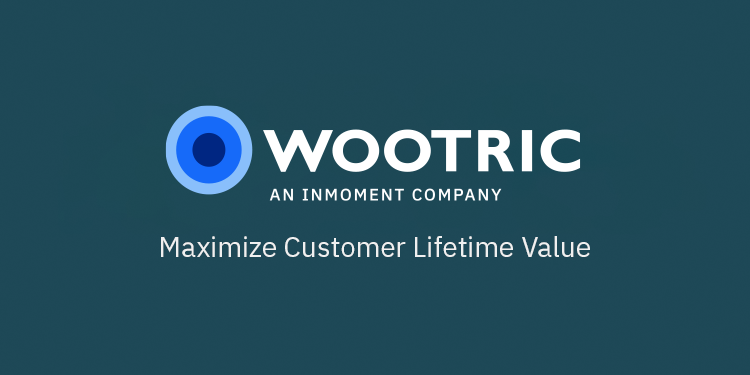Whether you specialize in customer experience, engagement, success, or service, you’re tasked with retaining and delighting customers all the time. Plus, you have to get to know them.
It’s tough!
That’s why we talked to 6 customer engagement experts to find out what strategies bring the most success. Here are their top tips:
1. Using Tools as You Scale
At Grasshopper, we struggled with finding ways to engage our customers as we grew. It became a real challenge for us to develop and maintain strong connections with our customers the way we used to: sending welcome packages, notes and swag to people we spotted on social doing cool things or giving us shout outs.
We realized that what we were doing was becoming harder and harder to scale, but we still wanted to keep that personal touch that our brand has become known for. So, we launched a private, invite-only customer community using Influitive. With this tool we’re able to interact with, reward and easily build relationships with more of our customers than we were ever able to in the past. It even helped us find brand advocates we didn’t even know about. Bonus!
 Allison Canty, Customer Engagement Manager at Grasshopper
Allison Canty, Customer Engagement Manager at Grasshopper
2. Combine Qualitative and Quantitative Research Methods
Companies with many customers (thousands or even millions) are truly lucky. They are even more lucky if those customers are willing to share feedback to help improve products or services. When you deal with large customer populations, researchers have many choices. These choices fall into two broad categories of research – qualitative and quantitative.
- Qualitative research usually deals with small sample sizes – from N=1 (aka a case study) to a few dozen. Qualitative research is best applied to provide in-depth knowledge into a specific subject, to provide answers to “Why?” questions. The findings of such research are used to generate ideas and hypotheses and to provide unexpected “Aha!”s about customers’ behavior and motivations.
- Quantitative research is about numbers and is used to validate hypotheses and to provide answers to “What?” questions. Quantitative research is best used to predict future outcomes or to explain past results with a certain degree of confidence. Usually such research is accompanied by the use of both descriptive and inferential statistics.
Qualitative and quantitative research methods are most effective when used in combination with one another. The most basic example that many of us can relate to is the classic Net Promoter Score methodology, which blends these two methods in a simple two question survey framework.
In the broader world of market research, here’s a more robust example: A well-run consumer segmentation study (quantitative research) should be preceded by some in-depth interviews or focus groups (qualitative research) to make sure the segmentation survey questions are valid and comprehensive. It is also really good practice to do 1:1 usability testing on the survey (qualitative research) in order to make sure potential survey respondents understand the wording of the questions and can take the survey in a reasonable amount of time.
 Alex Genov, Head of UX Research and Web Analytics at Zappos UX
Alex Genov, Head of UX Research and Web Analytics at Zappos UX
3. Put Yourself in The Customer’s Shoes
Truly understanding what they want/what does success look like for a customer (how do they define success with our product), and really acting on that, is essential for customer engagement success. We should strive to understand customers as best as we can (how they work, where they work, what their pains, etc..), but this part sometimes get lost. We need to put ourselves in the customers’ shoes as often as possible (and set aside our goals)….and be authentic in what we are trying to do and truly providing a delightful experience.
Create connections with customers outside their use of your products and services, and have fun. For example we are doing a fun contest “Insightly CRM gives me more time to ________” to spark engagement and learn about our customers. This is a fun way to get to know your customers outside the app.
 Lynn Tsoflias, Vice President of Customer Success at Insightly
Lynn Tsoflias, Vice President of Customer Success at Insightly
4. Get Out of The Building
What’s the number one mistake customer engagement professionals make when it comes to interacting with their customers?
As Steve Blank notes in The Startup Owner’s Manual, “Facts live outside of the building, where future customers (prospects, really) live and work, so that’s where you need to go. Nothing is more fundamental to Customer Development, and nothing is harder to do. It’s much easier to write code, build hardware, have meetings and write reports than it is to find and listen to potential customers.”
 Nichole DeMeré, SaaS Consultant & Customer Success Evangelist
Nichole DeMeré, SaaS Consultant & Customer Success Evangelist
5. Respond to Every Bit of Engagement
Brands often make the mistake of not responding to engagement. It’s a rare treat for someone to respond to a survey, leave a review, or share something on social, and every one of those interactions should be responded to as if they gave you a compliment personally. Double down with praise over those customers, and they’ll stay fans for a long time.
Also, make sure to ask for feedback. Use a personalized email service provide like Klaviyo or Vero, to send personalized emails to your customers asking for feedback. You can choose some custom inputs like their name, or products they’ve bought, and they will be personalized to the specific customer in the email. This way you’ll get higher engagement.
 Fan Bi, CEO of BlankLabel
Fan Bi, CEO of BlankLabel
6. Heed Comments & Suggestions
Whether you have one customer or many, you can begin taking a deep look at comments, suggestions or other feedback from them both online and offline. Customers commonly post their thoughts on social media, through product reviews or through sites such as Angie’s List or Yelp.
You can also gather insight from conversations that you have with customers directly through sales or service request calls and emails. Document common themes to have a better understanding of their wants, needs, pain points and expectations.
 Brian Honigman, Founder and CEO of Honigman Media
Brian Honigman, Founder and CEO of Honigman Media
Bonus tip: Answer the phone
Too often frustrated customers give up and take their business elsewhere after spending too much time lost in a sea of automated prompts. That’s why we make it a point to answer the phone right way. This allows us to learn what customers are looking for and find ways to exceed their expectations. It’s bad business to waste a customer’s time in an effort to free up ours. Customers will remember this personal attention, continue to use our business, and refer others to us, as well.
 Vladimir Gendelman, Founder and CEO of Company Folders.com
Vladimir Gendelman, Founder and CEO of Company Folders.com
Measure and improve customer experience. Sign up today for free Net Promoter Score, CSAT or Customer Effort Score feedback with InMoment.


